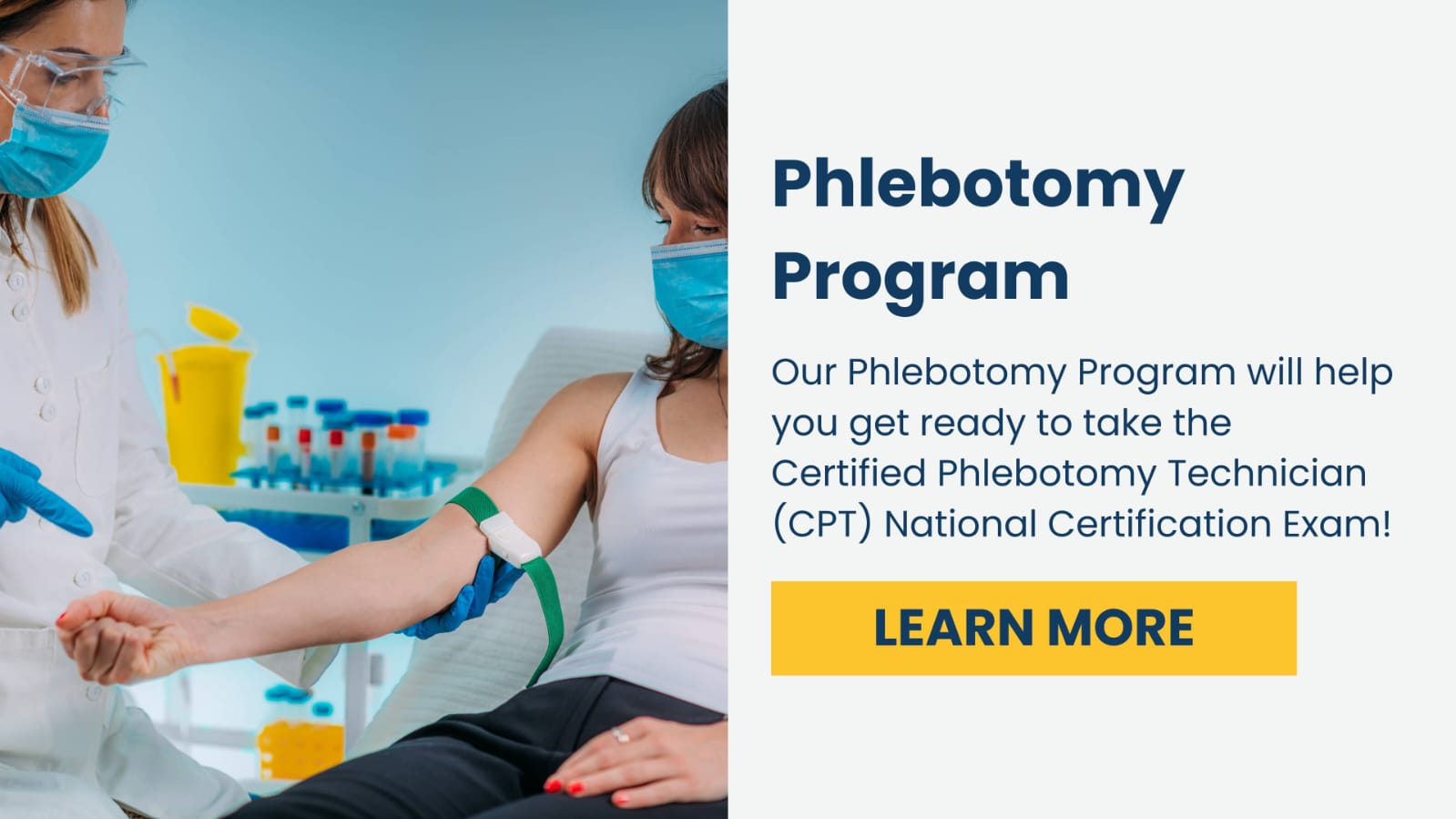Where Can Phlebotomists Work? Exploring Opportunities Across Healthcare Settings
Oct 02, 2024
Phlebotomists have a variety of work environments available to them. They can find employment in hospitals, clinics, doctors' offices, nursing homes, private home care, and medical laboratories.
If you're wondering, is phlebotomy good for medical school? The hands-on experience with patients and understanding of clinical procedures it provides can make it a valuable stepping stone for aspiring medical students.
If you’re exploring how to get phlebotomy experience, working in these diverse settings offers ample opportunities to build your skills and knowledge.
Additionally, phlebotomists are often needed in blood donation centers, research institutes, and even insurance companies. Their shifts can vary widely, with opportunities to work during the day, evening, or night, including weekends and holidays, depending on the needs of the facility.
Table of Contents
- Where can a phlebotomist work?
- What is the role of phlebotomists in the healthcare industry?
- Educational requirements to become a phlebotomist
- Career growth opportunities for phlebotomists
Where can a phlebotomist work?
Hospitals and medical centers
In these settings, phlebotomists are often part of the laboratory team and work closely with other healthcare professionals. There are several pros and cons of working in hospitals and medical centers as a phlebotomist. On the positive side, these settings offer a steady and stable work environment, with opportunities for career growth and advancement.
Diagnostic laboratories
Pros and cons of working in diagnostic laboratories
On the positive side, phlebotomists in these settings have the opportunity to work with advanced equipment and technologies, gaining valuable experience in handling various types of samples. They also get the chance to work closely with other healthcare professionals, fostering a collaborative and supportive work environment.
Blood banks
Pros and cons of working in blood banks
Blood banks specifically focus on collecting, testing, and storing blood for transfusions or other medical purposes. Working in a blood bank can be rewarding as it involves helping to save lives by ensuring a sufficient supply of blood is available for those in need.
Physicians' offices
Pros and cons of working in physicians' offices
In this setting, phlebotomists are responsible for drawing blood from patients for diagnostic purposes. Working in physicians' offices can provide a stable and consistent work environment, as well as the opportunity to develop relationships with patients and medical staff.
Nursing homes and long-term care facilities
Pros and cons of working in nursing homes and long-term care facilities
A phlebotomist can work in various healthcare settings, including hospitals, clinics, laboratories, and blood banks. However, one specific setting where phlebotomists often find employment is in nursing homes and long-term care facilities.
These facilities provide care for elderly individuals who may require regular blood tests for monitoring their health conditions or medication levels.
Mobile phlebotomy services
Pros and cons of working in mobile phlebotomy services
Phlebotomists can work in a variety of settings, including hospitals, clinics, laboratories, blood banks, and physician offices. However, one emerging trend in the field is mobile phlebotomy services. These services provide the convenience of having blood drawn in the comfort of a patient's own home or workplace.
The pros of working in mobile phlebotomy services include flexibility in scheduling, the ability to provide personalized care to patients, and the opportunity to work independently.
What is the role of phlebotomists in the healthcare industry?
They are responsible for locating and accessing veins, using various techniques such as venipuncture or fingerstick, depending on the specific requirements of the test. They also label and transport the blood samples to the laboratory for analysis, ensuring accurate and timely results.
Educational requirements to become a phlebotomist
High school diploma or equivalent
This means that individuals who have completed their secondary education or have obtained a GED are eligible to pursue a career in phlebotomy. However, it is important to note that specific educational requirements may vary depending on the state or institution.
Some states or employers may require additional certification or training programs in phlebotomy and blood testing, which typically involve hands-on experience and classroom instruction.
Phlebotomy training program
These programs are available at various educational institutions, such as community colleges, vocational schools, and hospitals. The duration of the program can vary, but it generally takes a few months to complete.
Clinical training
These programs are often offered at vocational schools or community colleges and can range in length from a few weeks to several months. During this training, students learn essential skills such as how to properly draw blood, handle specimens, and maintain a sterile environment.
Certification
For those wondering how to get a phlebotomy certification,there are two main certifications that are recognized in the field of phlebotomy: Certified Phlebotomy Technician (CPT) and Phlebotomy Technician (PBT). These certifications demonstrate that an individual has completed the necessary training and has the knowledge and skills required to safely and effectively draw blood from patients.
In order to obtain these certifications, individuals typically need to complete a phlebotomy training program, which can vary in length but generally lasts a few months.
- Certified Phlebotomy Technician (CPT)
- Phlebotomy Technician (PBT)
Ask for our phlebotomy program!
Our programs are short and fast-paced and accredited by the Commission for Independent Education, the Florida Board of Nursing, and the National Health Career Association.
Career growth opportunities for phlebotomists
In this role, individuals are responsible for overseeing a team of phlebotomists, ensuring that proper procedures and protocols are followed, and managing the overall operations of a phlebotomy department.
There are many benefits of being a phlebotomist, such as the opportunity to work in diverse settings, build strong patient-care skills, and advance into specialized roles like pediatric or geriatric phlebotomy.
Phlebotomists often work closely with other lab professionals, leading to some overlap in roles. However, it's important to understand the differences in responsibilities and opportunities when comparing a phlebotomist vs lab tech









